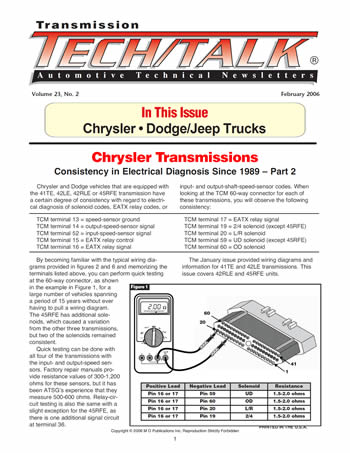


Chrysler and Dodge vehicles that are equipped with the 41TE, 42LE, 42RLE or 45RFE transmission have a certain degree of consistency with regard to electrical diagnosis of solenoid codes, EATX relay codes, or input- and output-shaft-speed-sensor codes. When looking at the TCM 60-way connector for each of these transmissions, you will observe the following consistency:
- TCM terminal 13 = speed-sensor ground
- TCM terminal 14 = output-speed-sensor signal
- TCM terminal 15 = EATX relay control
- TCM terminal 16 = EATX relay signal
- TCM terminal 17 = EATX relay signal
- TCM terminal 19 = 2/4 solenoid (except 45RFE)
- TCM terminal 20 = L/R solenoid
- TCM terminal 52 = input-speed-sensor signal
- TCM terminal 59 = UD solenoid (except 45RFE)
- TCM terminal 60 = OD solenoid
By becoming familiar with the typical wiring diagrams provided in figures 2 and 6 and memorizing the terminals listed above, you can perform quick testing at the 60-way connector, as shown in the example in Figure 1, for a large number of vehicles spanning a period of 15 years without ever having to pull a wiring diagram. The 45RFE has additional solenoids, which caused a variation from the other three transmissions, but two of the solenoids remained consistent.
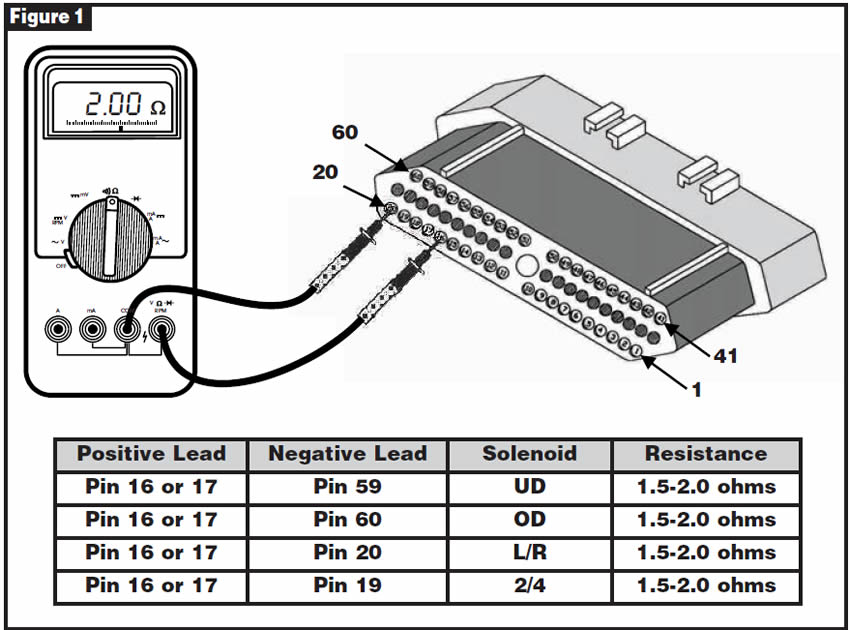
Quick testing can be done with all four of the transmissions with the input- and output-speed sensors. Factory repair manuals provide resistance values of 300-1,200 ohms for these sensors, but it has been ATSG’s experience that they measure 500-600 ohms. Relay-circuit testing is also the same with a slight exception for the 45RFE, as there is one additional signal circuit at terminal 36.
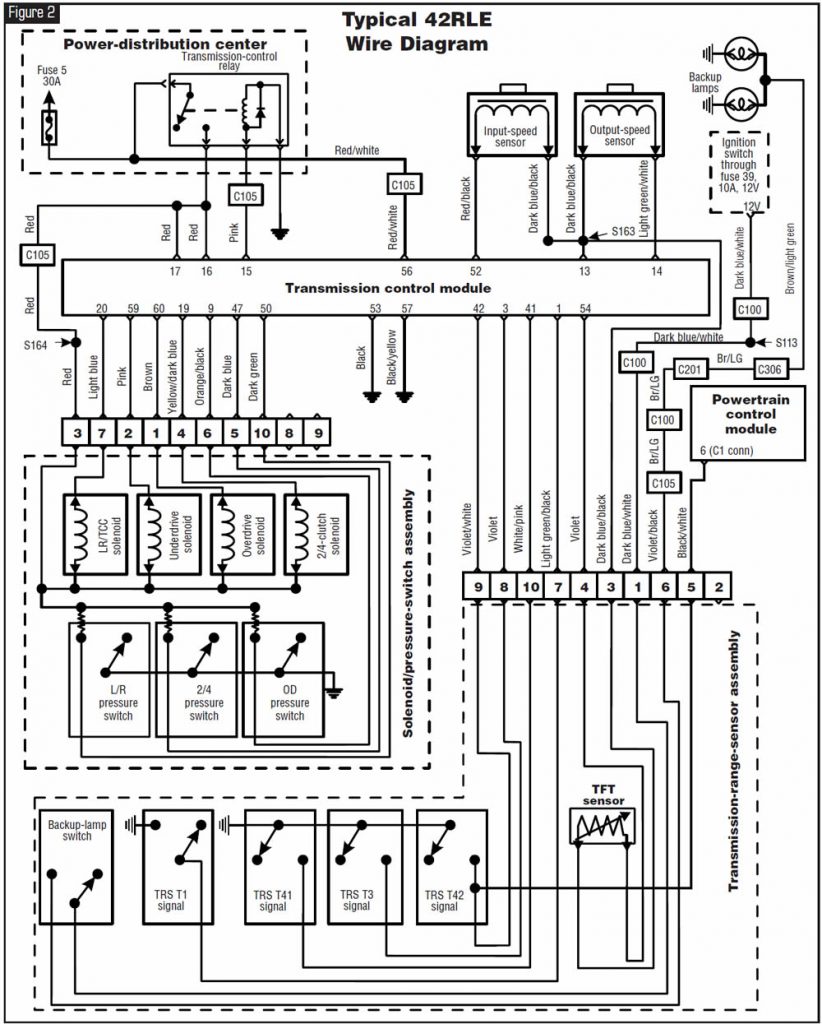
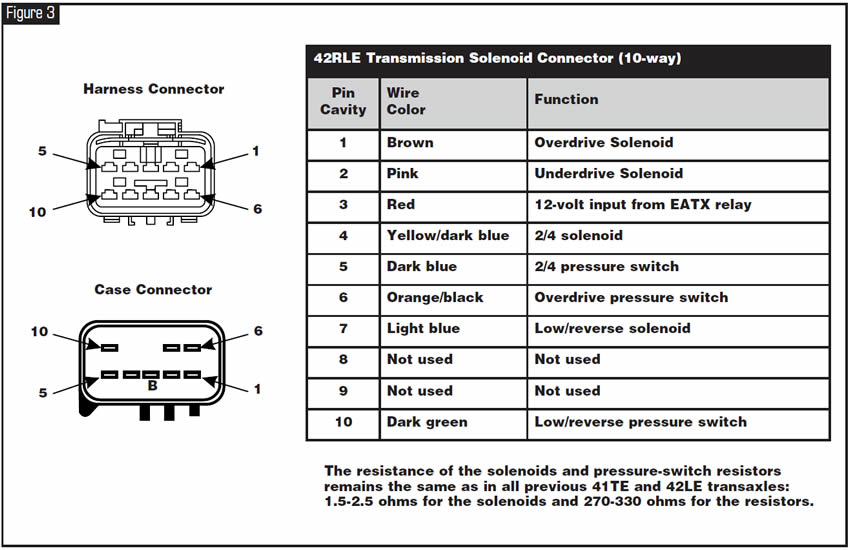
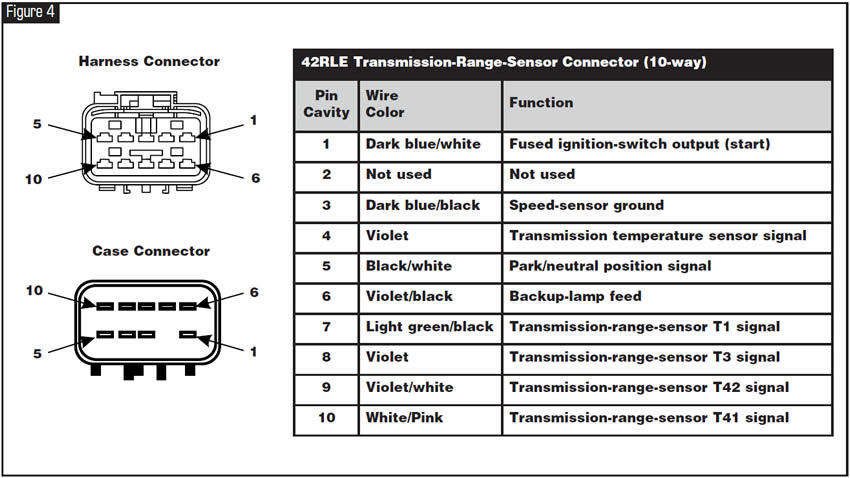
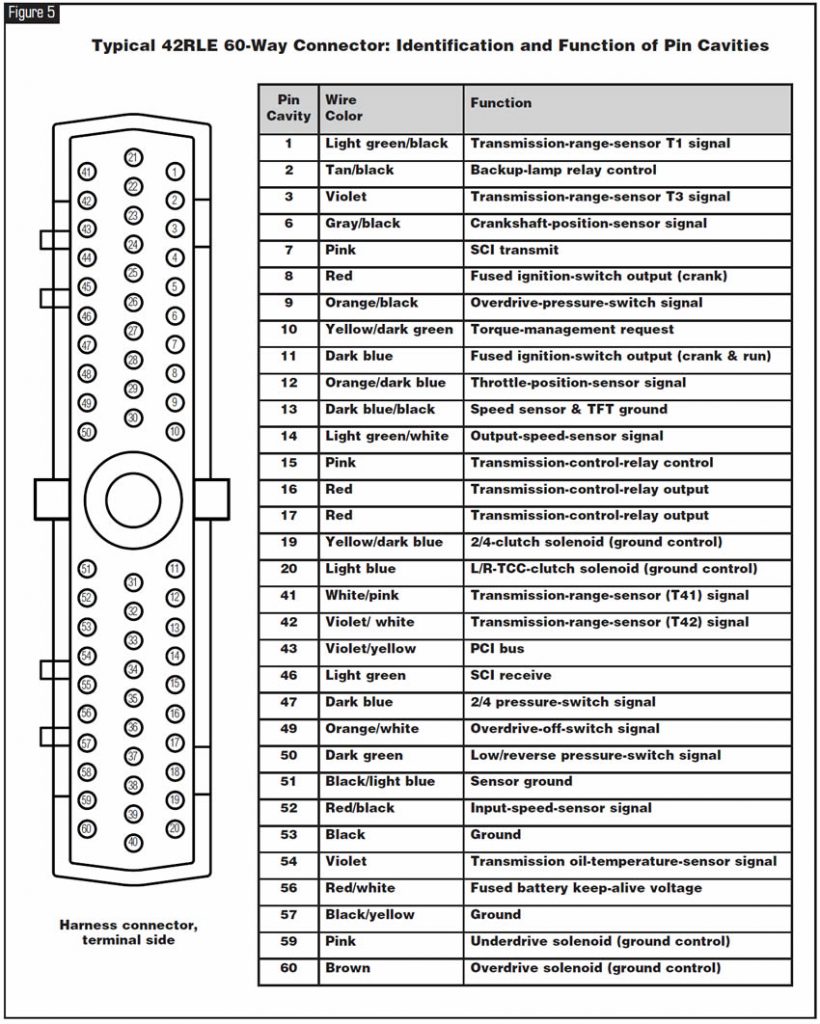
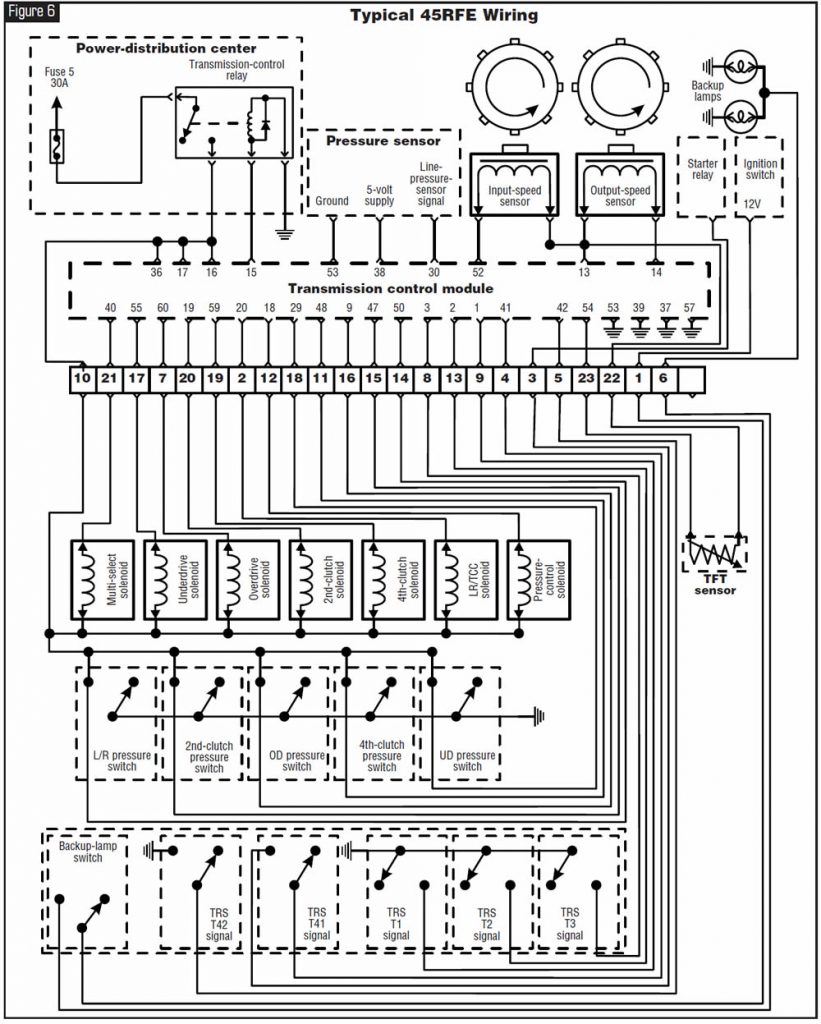
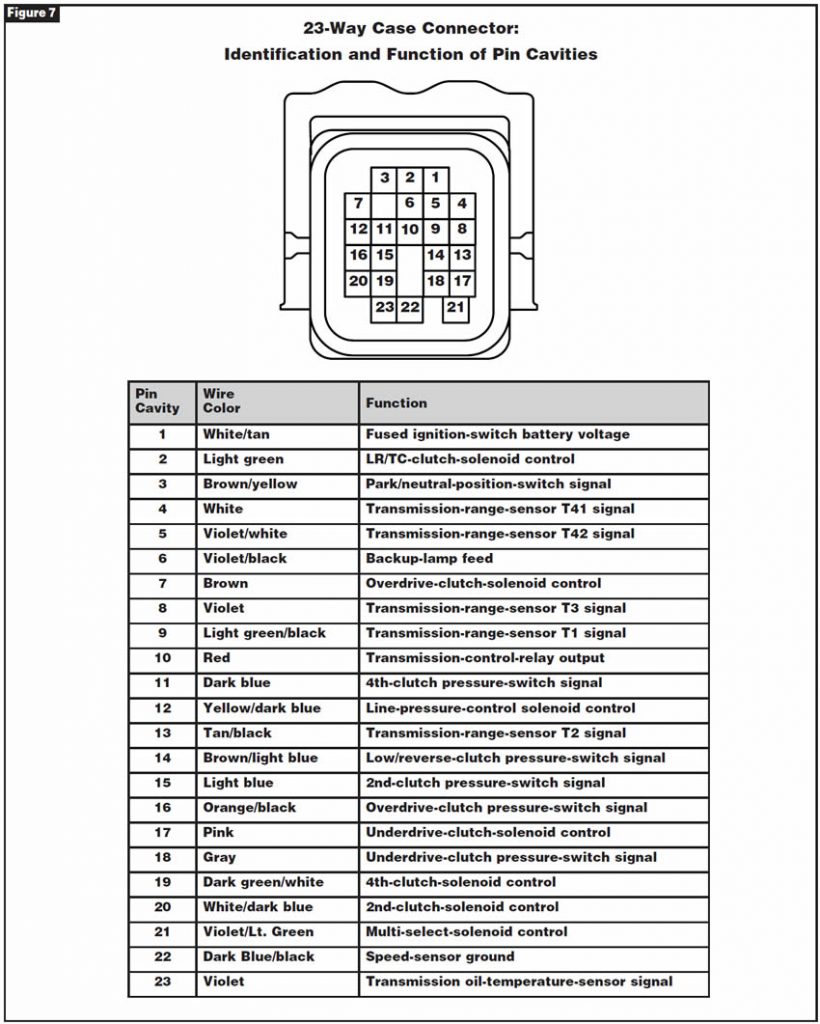
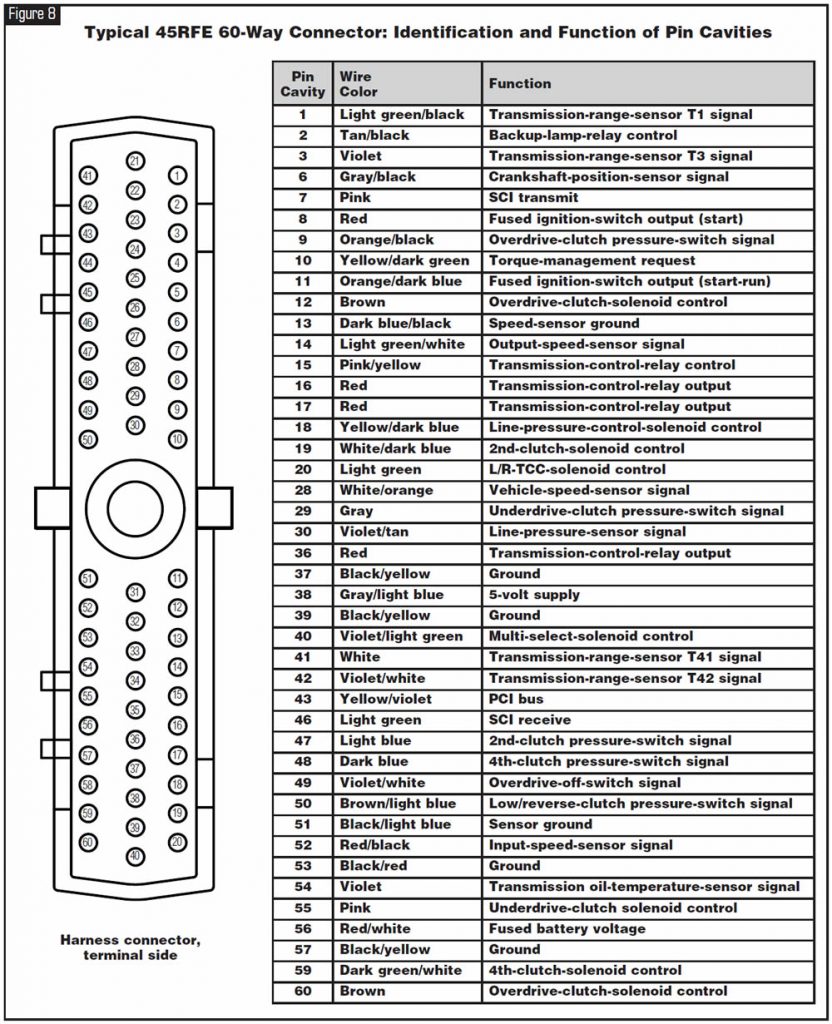




2000-2001 Dodge Dakotas and Durangos and 1999-2001 Jeep Grand Cherokees equipped with the 45RFE or 545RFE transmission and the 4.7-liter engine may exhibit a harsh 2-3 upshift accompanied by a clunk or shudder on acceleration, or a harsh 4-5 upshift or a harsh 5-4 downshift (2001 Jeep only).

The TCM or PCM requires a “Shift Quality Enhancement” software update.

When all diagnostic procedures have been completed to address these complaints and the complaints are still present, the TCM or PCM will require reprogramming to cure the complaint.
This will require a scan tool (DRB III) that is capable of interfacing with the Mopar Diagnostic System 2 (MDS2) to download the necessary revisions.
When the reprogramming is complete, an Authorized Software Update Label (refer to Figure 9) must be placed near the emissions label.
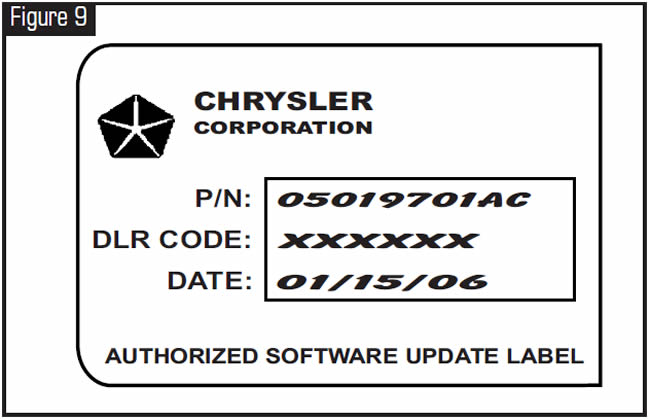
The reprogramming process may cause diagnostic trouble codes to be stored in one or more modules. Be sure to complete the repair by clearing all DTCs.

- 1999-2001 Jeep Grand Cherokee TCM Software Revision . . .PN05019701AC (Ver. 9.3)
- 2000 Dodge Dakota & Durango TCM Software Revision . . . .PN05018454AB (Ver. 9.1)
- 2001 Dodge Dakota & Durango TCM Software Revision . . . . . .PN56028285 (Ver. 8.4)
- 1999 Jeep Grand Cherokee PCM Software Revision . . . . . . . .Calibration #99Cal20
- 2000 Jeep Grand Cherokee PCM Software Revision . . . . . . . .Calibration #00Cal17


February 2006 Issue
Volume 23, No. 2
- Chrysler Transmissions: Consistency in Electrical Diagnosis Since 1989 – Part 2
- Dodge/Jeep Trucks with 45RFE/545RFE Transmissions: Harsh Shifts

